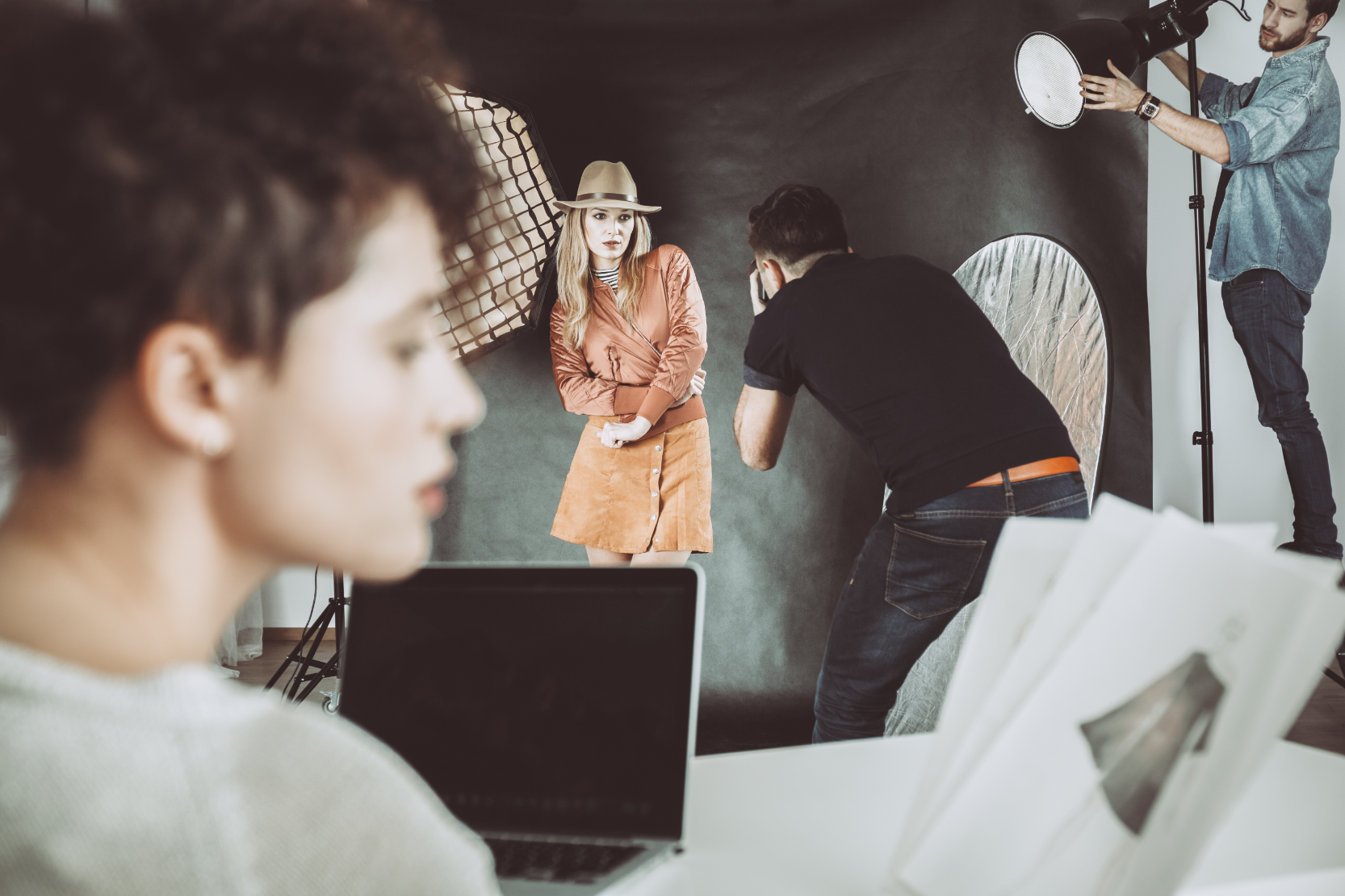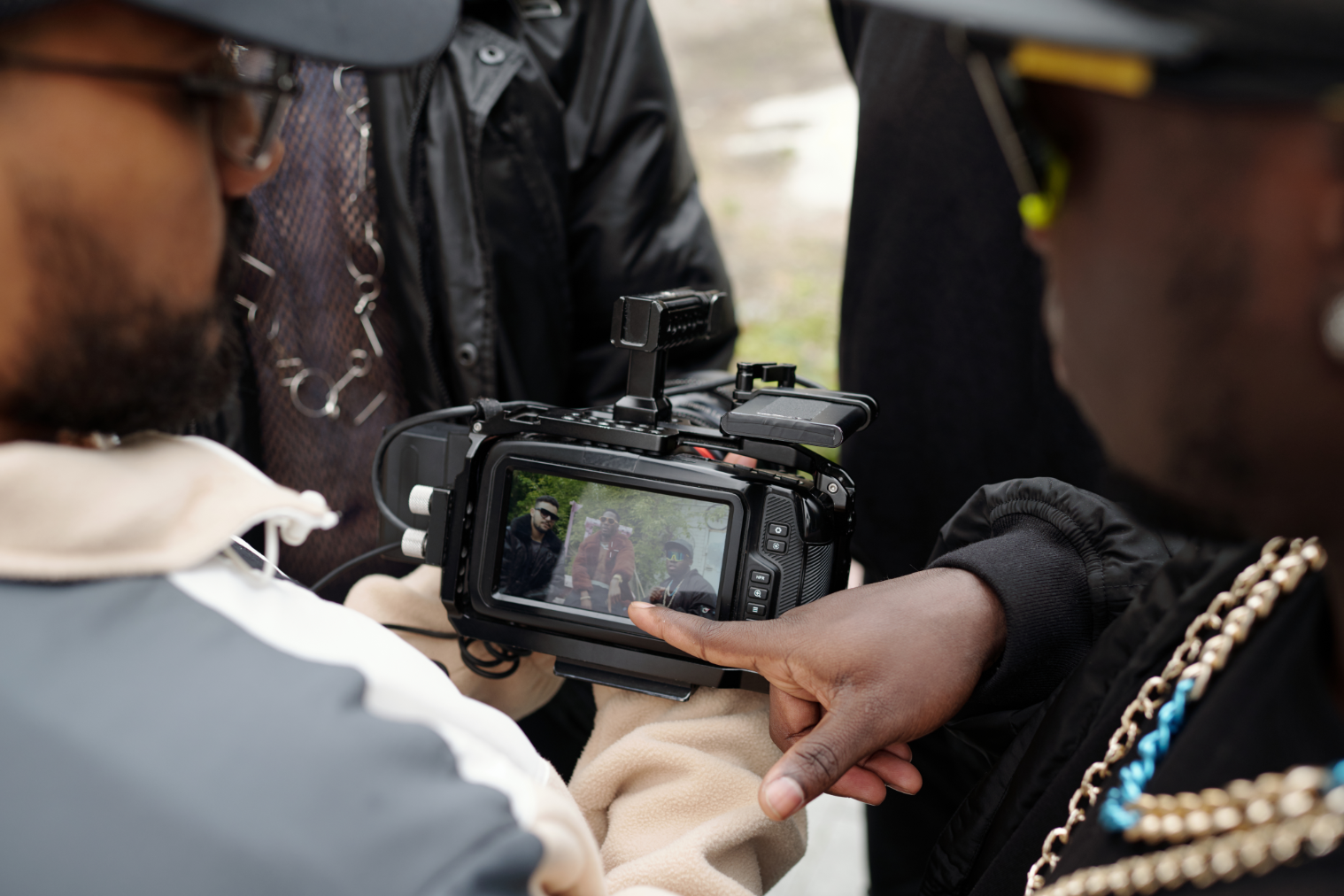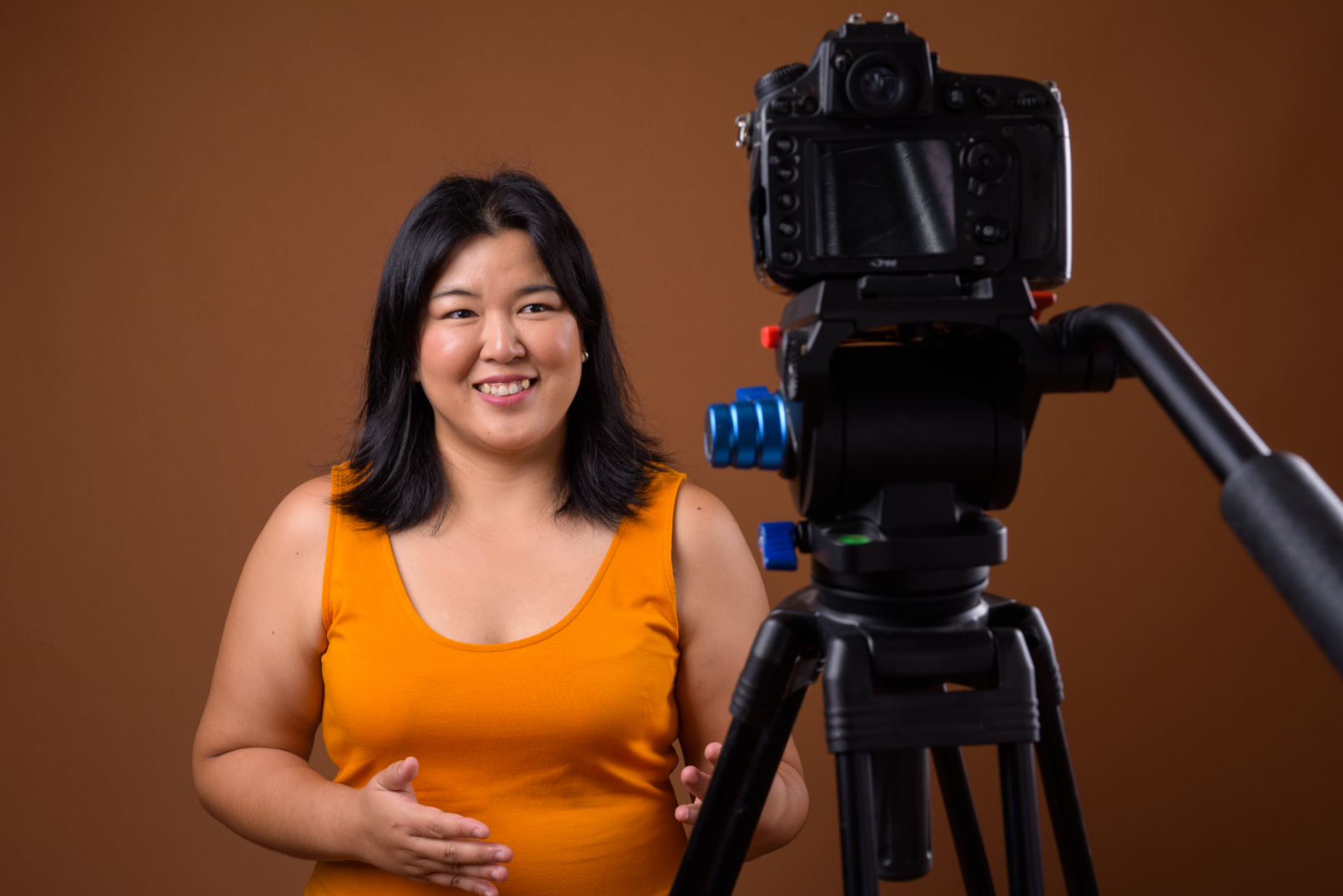The Importance of Storyboarding in Digital Films
.avif)
Storyboarding is a crucial element in the process of filmmaking, especially in the digital era where advanced technology and visual effects play a significant role.
With digital films becoming more prevalent, the importance of storyboarding has increased significantly. A well-planned and executed storyboard can save time, money, and resources while ensuring that the final product is visually appealing and structured.
In this blog, we will delve into the importance of storyboarding in digital films, the benefits it provides, and how to create effective storyboards.
What is Storyboarding?
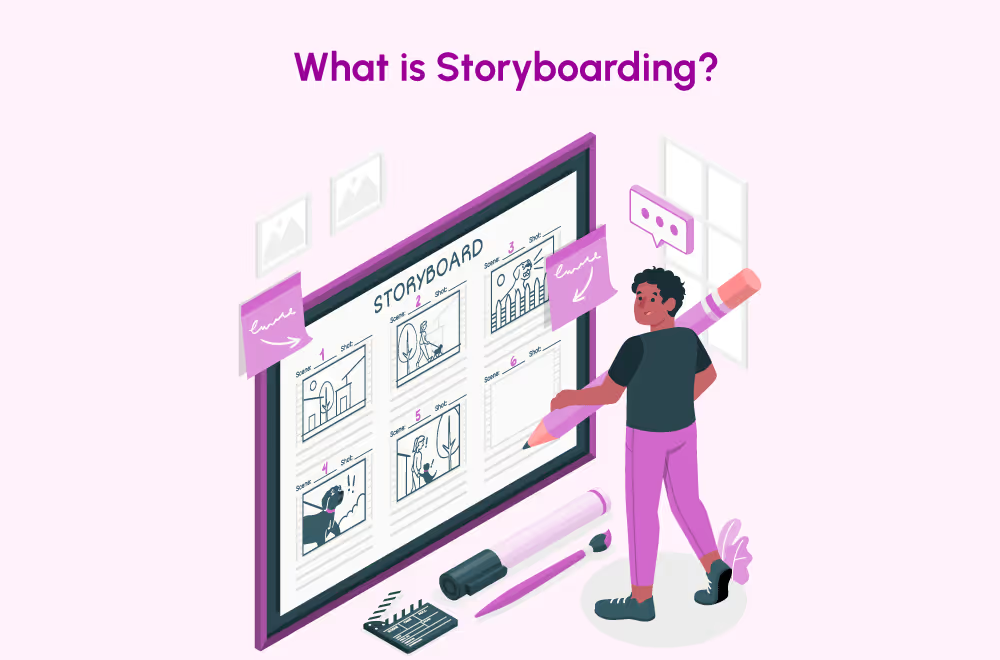
Storyboarding is the process of creating a visual representation of a film's storyline, including its structure, camera shots, movements, and other essential details. Whether you’re working with a video production company in Delhi or planning a solo project having a solid storyboard ensures that everyone is aligned on the visual direction.It is a tool filmmakers use to pre-visualize their vision and plan how they will bring it to life.
The process of creating a storyboard begins with research and planning. The director and the creative team must first develop the film's storyline and determine the critical scenes and their sequence. They must also consider the film's tone, style, and mood, which will influence the visual aspects of the storyboard.
Once the planning is complete, the team begins sketching the storyboard, scene by scene. The sketches should reflect the camera angles, movements, and other crucial details such as lighting, sound, and special effects.
The Different Types of Storyboarding
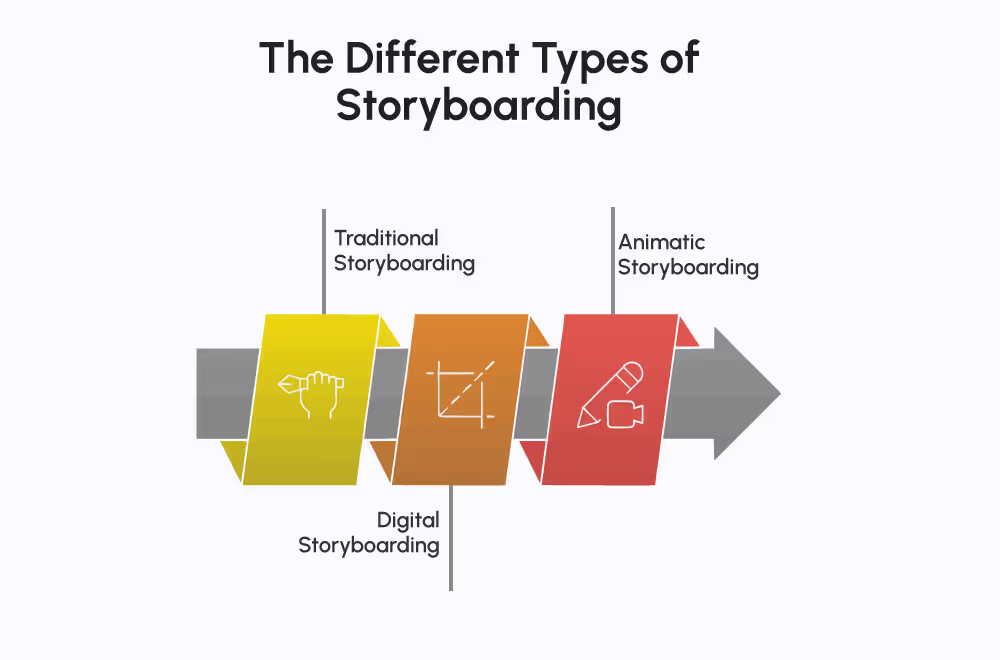
There are several types of storyboarding used in the film industry, including:
Traditional Storyboarding:
This involves creating hand-drawn sketches of the storyboard, which can be time-consuming and challenging.
Digital Storyboarding:
This involves using computer software and tools to create the storyboard digitally. It is a quicker and more efficient method.
Animatic Storyboarding:
This involves creating a rough animated version of the storyboard, which gives a better idea of how the final product will look and feel.
Why is Storyboarding important in Digital Films?
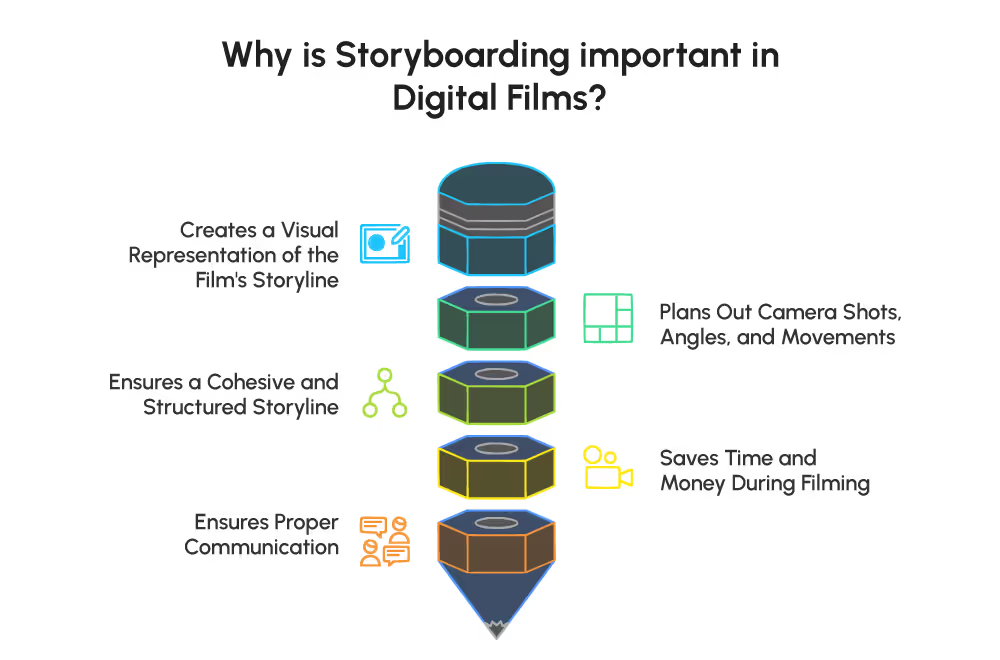
Creates a Visual Representation of the Film's Storyline
Storyboarding allows the creative team to see how the story will unfold visually and ensure it is coherent and structured. It is crucial in digital films as it helps the team to visualize and plan the film's storyline, scene by scene.
Plans Out Camera Shots, Angles, and Movements
Storyboarding helps the cinematographer to plan out camera shots, angles, and movements. It allows them to experiment with different camera techniques and angles to find the most effective way to tell the story.
Ensures a Cohesive and Structured Storyline
For every corporate video production company, storyboarding helps to ensure that the film's storyline is cohesive and structured. It allows the director to identify any potential plot holes or inconsistencies and make the necessary adjustments before filming begins.
Saves Time and Money During Filming
Storyboarding saves time and money during filming as it provides a detailed plan of how each scene will be shot, including camera angles, movements, and other essential details. This allows the crew to work more efficiently and effectively, reducing the time and resources required to shoot the film.
Ensures Proper Communication
Storyboarding ensures proper communication between the director, cinematographer, and other members of the film crew. It allows them to share a common vision of the film, which is essential for creating a cohesive and effective final product.
How to Create an Effective Storyboard for Digital Films
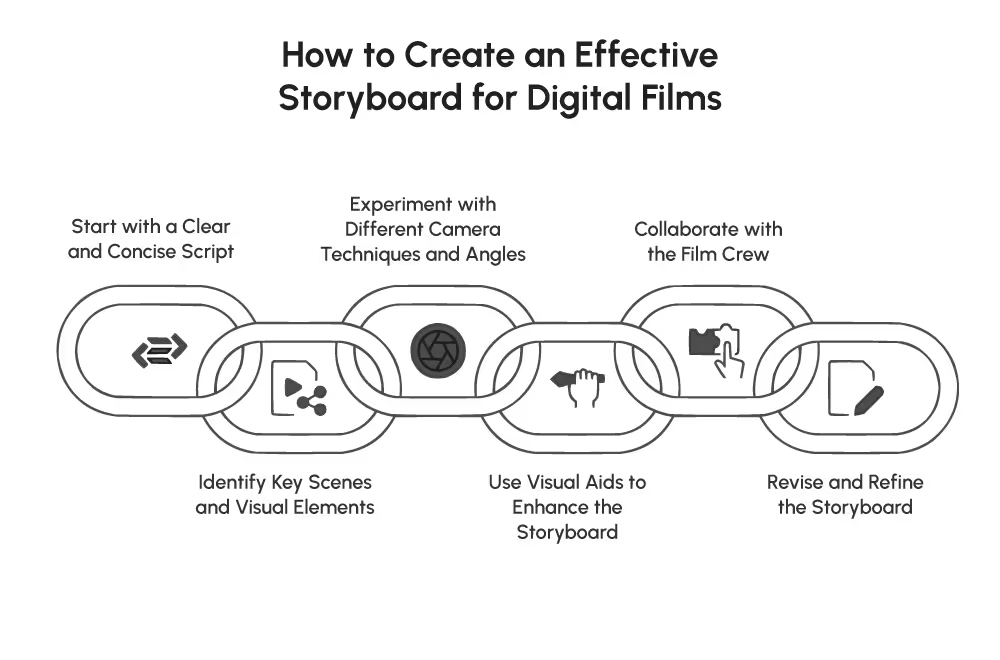
Start with a Clear and Concise Script
Creating an effective storyboard for a digital film starts with a clear and concise script. The script should provide a detailed description of the story, including the tone, mood, and style of the film.
Identify Key Scenes and Visual Elements
Identifying key scenes and visual elements is essential in creating an effective storyboard. It allows the team to focus on the critical parts of the story and plan how they will be visually represented.
Experiment with Different Camera Techniques and Angles
Storyboarding is an opportunity to experiment with different camera techniques and angles. It allows the team to find the most effective way to tell the story visually.
Use Visual Aids to Enhance the Storyboard
Using visual aids such as reference images, sketches, and notes can help to enhance the storyboard. It allows the creative team to convey their ideas more effectively and efficiently.
Collaborate with the Film Crew
Collaborating with the film crew is crucial in creating an effective storyboard. It allows for input and feedback from different perspectives, which can help to improve the overall quality of the storyboard and the final product.
Revise and Refine the Storyboard
Revising and refining the storyboard is a crucial step in the process of creating an effective storyboard. It allows the team to identify any potential issues or inconsistencies and make the necessary adjustments before filming begins.
Creation of a Storyboard
Pre-production research and planning
The first step in creating a storyboard is to conduct pre-production research and planning. This involves reading the script, identifying key scenes and visual elements, and conducting research to gather reference images and inspiration. The director and the creative team should also discuss the tone, mood, and style of the film to ensure that the storyboard reflects the vision of the film.
Sketching the storyboard
The second step in creating a storyboard is to sketch the storyboard. Sketching the storyboard involves creating rough sketches of each scene, including camera angles, movements, and other essential details. The sketches should be simple and easy to read, with notes and annotations to provide additional context.
Nikita, our storyboarder says,
“A stronger pre-production helps create a stronger storyboard which eventually helps with better execution of the video. Clear communication from the director and his vision when elaborated in the pre-production, helps create a storyboard that captures his thoughts alingned with the clinet's. The storyboard also helps the crew in the production process where they know which prop to use where.”

Finalizing the storyboard
Once the sketches are complete, the next step is to finalize the storyboard. This involves reviewing the sketches and making any necessary adjustments to ensure that the storyboard accurately reflects the script and the vision of the film. Finalizing the storyboard also involves adding any necessary visual aids, such as reference images, notes, and annotations, to enhance the storyboard.
Creating Effective Storyboards- Things to keep in mind
Creating an effective storyboard for a digital film requires careful attention to detail, creativity, and planning. In this section, we will discuss some tips to help you create a storyboard that accurately reflects the vision of the film and guides the filmmaking process.
Keep it simple
One of the most important tips for creating an effective storyboard is to keep it simple. The purpose of a storyboard is to provide a visual representation of the script and the vision of the film. Therefore, it is essential to avoid cluttering the storyboard with unnecessary details or distractions that may detract from the overall message of the story. Keeping the storyboard simple will help to ensure that the focus remains on the essential elements of the film.
Focus on the essentials
Another critical tip for creating an effective storyboard is to focus on the essentials. This involves identifying the key scenes and visual elements of the film and ensuring that they are included in the storyboard. Focusing on the needs will ensure that the storyboard accurately reflects the vision of the film and guides the filmmaking process.
Use reference images
Using reference images is an effective way to enhance the storyboard and ensure that the visual elements of the film are accurately represented. Reference images can be used to illustrate camera angles, lighting, set design, and other essential details that may be difficult to convey through sketches alone. Using reference images will help to ensure that the storyboard accurately reflects the vision of the film and guides the filmmaking process.
Pay attention to details
Paying attention to details is crucial in creating an effective storyboard. The storyboard should accurately reflect the director's vision, including the camera angles, movements, and transitions. Details such as lighting, composition, and framing should also be carefully considered to ensure that the storyboard accurately represents the narrative and visual style of the film.
Creating an effective storyboard is essential for successful digital filmmaking. By keeping it simple, focusing on the essentials, using reference images, and paying attention to details, filmmakers can create a clear and concise storyboard that accurately represents the director's vision and guides the filmmaking process from pre-production to post-production.
Conclusion
Storyboarding is an essential tool for digital filmmaking that cannot be overlooked. It is a creative and practical process that helps to bring the director's vision to life and guide the filmmaking process. By taking the time to create a detailed and effective storyboard, filmmakers can save time, reduce production costs, and create better films.
If you're working on a digital film and searching for a production house near me, the Filmbaker team understands how powerful storyboarding can be in shaping a film’s direction. Therefore, its effective storyboarding leads to the desired outputs and delivers quality content. It ensures high-quality video delivery as the whole content has been well thought out through storyboarding.
If you are a filmmaker or an aspiring filmmaker, we encourage you to incorporate storyboarding into your filmmaking process. Take the time to plan and visualize your narrative, sketch out the shots and camera movements, and use reference images and digital tools to create a detailed and practical storyboard.
Contact us today and let us help you storyboard like never before.
